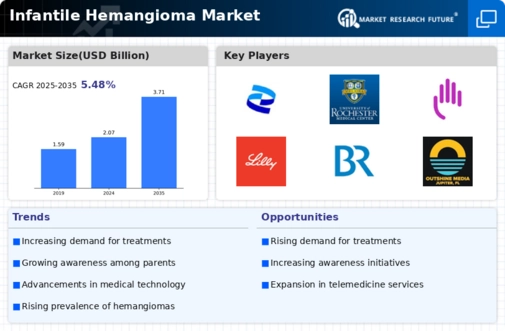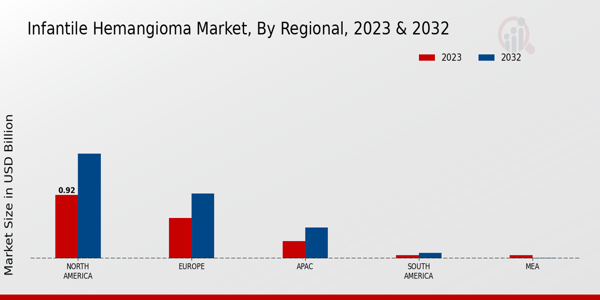Market Trends and Projections
Growing Awareness and Education
There is a notable increase in awareness and education regarding infantile hemangiomas, which is positively impacting the Global Infantile Hemangioma Market Industry. Healthcare professionals, parents, and caregivers are becoming more informed about the nature of these tumors and the available treatment options. This heightened awareness leads to earlier diagnosis and intervention, which can significantly improve outcomes for affected infants. As educational initiatives continue to expand, the market is likely to see a surge in demand for effective treatments, further solidifying its growth trajectory.
Increased Healthcare Expenditure
The Global Infantile Hemangioma Market Industry is benefiting from rising healthcare expenditures across various regions. Governments and private sectors are allocating more resources to pediatric healthcare, which includes the diagnosis and treatment of conditions like infantile hemangiomas. This trend is particularly evident in developed countries, where healthcare budgets are expanding to accommodate advanced medical technologies and treatments. As a result, the market is expected to grow at a compound annual growth rate (CAGR) of 5.46% from 2025 to 2035, reflecting the increasing prioritization of pediatric health.
Advancements in Treatment Modalities
Innovations in treatment modalities are propelling the Global Infantile Hemangioma Market Industry forward. The introduction of new therapies, such as beta-blockers and laser treatments, has transformed the management of infantile hemangiomas. These advancements not only improve patient outcomes but also reduce the need for invasive procedures. As healthcare professionals become more familiar with these treatments, the adoption rates are likely to increase, further driving market growth. The anticipated market value of 3.71 USD Billion by 2035 reflects the potential for continued investment in research and development of novel therapeutic options.
Rising Incidence of Infantile Hemangioma
The Global Infantile Hemangioma Market Industry is experiencing growth due to the increasing incidence of infantile hemangiomas among newborns. It is estimated that approximately 4 to 5 percent of infants are affected by this condition, leading to a heightened demand for effective treatment options. As awareness of this vascular tumor rises, healthcare providers are more likely to diagnose and treat these cases, contributing to market expansion. The projected market value for 2024 is 2.07 USD Billion, indicating a significant opportunity for pharmaceutical companies and healthcare providers to develop innovative therapies and interventions.
Regulatory Support for Pediatric Treatments
Regulatory bodies are increasingly supporting the development of pediatric treatments, which is beneficial for the Global Infantile Hemangioma Market Industry. Initiatives aimed at expediting the approval process for drugs and therapies specifically designed for children are gaining traction. This regulatory environment encourages pharmaceutical companies to invest in research and development for treatments targeting infantile hemangiomas. As a result, the market is poised for growth, with the potential for innovative therapies to emerge that address the unique needs of pediatric patients.















